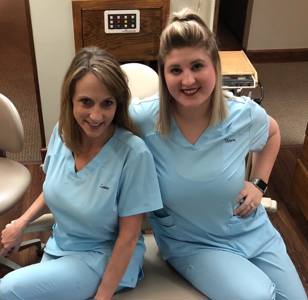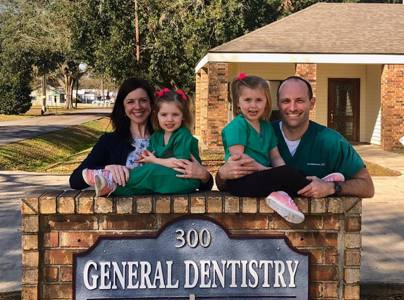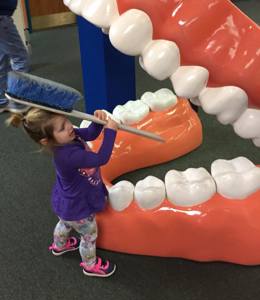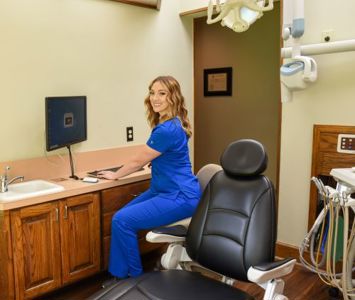Gum Disease Treatment
Defeat gum disease and reclaim your smile: Trust our experts for effective gum disease treatment that leaves you beaming!
Gum Disease or Periodontal Treatment Can Save Your Teeth And Your Life
Stages and symptoms of Gum/Periodontal disease are important to note. The earliest stage of periodontal disease is known as gingivitis, which some oral health experts say affects almost 75% of the adult population in America. If gingivitis is not treated promptly, it progresses to an advanced stage called periodontitis, an infection of the gums or gingiva, as it is known in dental circles.
This infection in the gums that support the teeth begins when plaque on your teeth hardens into tartar that grows below the gum line. This infection can set and spread fast, while it becomes irritable to the soft tissue in your gums. Patients’ initial symptoms of this gum disease often go unnoticed since they are usually mild in their initial stages.
These initial gum disease symptoms include loosened teeth, unusual gum bleeding after brushing, and swollen red and tender gums. As this disease progresses, bacteria pockets form along the gum line, and gums often recede away from the teeth. This type of bacteria can destroy both bone and gum tissue, causing tooth loss that often brings little or no advanced pain.
As both general and cosmetic dentists, we offer several non-surgical options of periodontal or gum disease treatments, even when it has advanced to periodontitis.
Below are listed four such treatment methods:
- Lasers can be used to promote the reattachment of the gum to bone and teeth.
- Therapy with antibiotics – is used to combat and stop the spread of infection.
- Teeth Scaling – removing hardened plaque from below the gum line.
- Root Planing – this reduces the rough areas on a tooth’s root.
Where gum or periodontal disease infection has significantly advanced, surgery may be called for. In such cases, we will refer our patient to a colleague, a trusted periodontist, and a competent oral surgeon.
Specific Treatment Aftercare
Depending on the patient’s after-treatment condition, we will provide them with the appropriate home-care instructions. However, they should always expect a restructuring of their current oral health regimen to prevent any further dental care issues. This change would also include increased office visits as a preventative measure.
If you want long-lasting protection from gum disease or periodontal treatment, please give us a call and inquire about dental sealants. We will be happy to assist you with your inquiry.
Sedation Dentistry
For your convenience, we offer these three types of comfort and sedation dentistry:
Nitrous Oxide
This “laughing gas,” as most people know it, is used for simple fillings or routine cleaning treatments and is the most common form of sedation. Thanks to this simple form of sedation, your entire dental treatment can be a relaxing experience.
Sedation By IV
During IV Sedation, the patient’s vital signs are monitored throughout the entirety of the procedure, as the sedation is administered via IV. The patient will have been sleeping during the entire process, in this case, and will awaken only after the procedure.
Suppose a patient must return to school or work after completing the procedure. In that case, it will be especially beneficial for them to understand their need for sufficient recovery time before they leave.
Conscience Oral Sedation
We currently offer oral sedation for our patients who wish to remain conscience and yet come to us with gagging problems or a higher than average amount of fear and anxiety. Throughout the entire procedure, we closely monitor their vital signs once giving a combination of oral medications.
Once taking the oral medication we provide, the patient becomes highly relaxed and drowsy, and after their appointment, most patients remember nothing of the fear or anxiety they may have thought to experience without.
You will not be put to sleep with oral sedation, and during the entire procedure, you will be able to respond to Dr. Melancon and his team.
Specials
In Pain?
Patients who self-pay and contact us due to pain, such as those requiring root canal treatment, fillings, or crowns, will incur a $75 charge for their appointment. This fee encompasses the examination and x-ray essential for diagnosis. Excludes patients with dental insurance.
Need a Cleaning?
New patients, paying out of pocket, who schedule a cleaning will be charged $175 for a basic cleaning. This fee covers an examination, two sets of x-rays, and a regular cleaning. Excludes deep cleaning procedures and patients with insurance.
Need an Extraction?
New patients, paying out of pocket, requiring an extraction will incur a charge of $205. This includes the cost of X-rays, an examination, and the extraction procedure itself. Excludes patients with insurance.
© Melancon Family Dentistry 2025 | Sitemap
Medical Website Designed & Developed by













